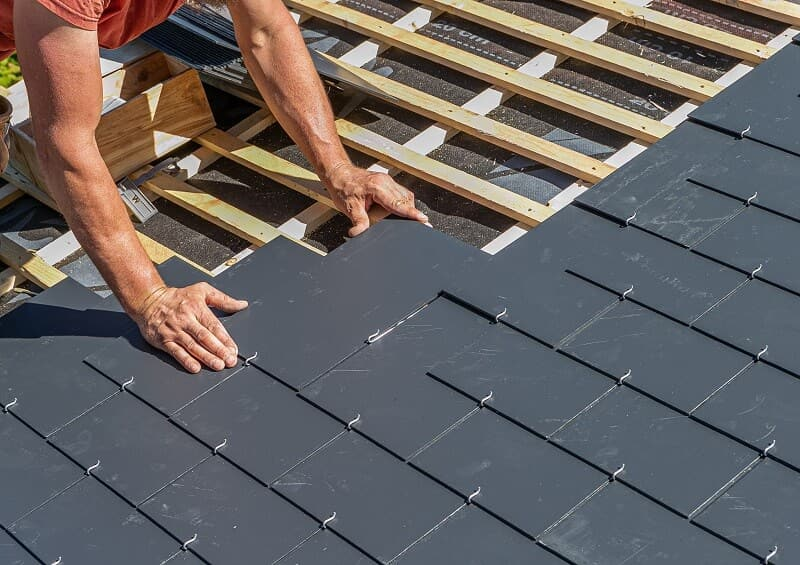Roof installation is a crucial aspect of building construction and home maintenance, ensuring the durability, energy efficiency, and aesthetic appeal of a structure. A well-installed roof not only protects the building from weather elements but also enhances its value. This guide outlines the essential steps and considerations for a successful roof installation, providing valuable insights for homeowners and property managers.
1. Assessing Your Roof Installation Needs
Before commencing any roof installation project, it is essential to assess your specific needs and requirements. This initial evaluation includes:
- Roof Type and Design: Consider the type of roof that best suits your building, whether it’s a gabled, hip, flat, or shed roof. Each design has its advantages and suitability depending on factors like climate and architectural style.
- Material Selection: Choose roofing materials based on durability, cost, and aesthetic preferences. Common options include asphalt shingles, metal roofing, tiles, and slate. Each material has its own set of benefits and considerations.
- Budget Planning: Establish a budget that includes not only the cost of materials but also labor, permits, and potential unforeseen expenses. A detailed budget ensures you can manage costs effectively and avoid overspending.
2. Hiring a Qualified Roofing Contractor
Selecting a reputable roofing contractor is critical to the success of your roof installation. When hiring a contractor, consider the following:
- Experience and Credentials: Verify the contractor’s experience and qualifications. Ensure they are licensed, insured, and have a track record of successful roof installations.
- References and Reviews: Request references from previous clients and check online reviews to gauge the contractor’s reliability and workmanship quality.
- Written Estimates and Contracts: Obtain written estimates from multiple contractors and review their contracts thoroughly. A detailed contract should outline the scope of work, materials, timeline, and payment terms.
3. Preparing for Roof Installation
Proper preparation is key to a smooth roof installation process. The preparation phase includes:
- Permits and Regulations: Check local building codes and obtain the necessary permits for roof installation. Compliance with regulations ensures that the installation is legal and meets safety standards.
- Roof Inspection: Conduct a thorough inspection of the existing roof structure. Identify any underlying issues such as water damage, rot, or structural damage that need to be addressed before installation begins.
- Weather Considerations: Plan the installation schedule around favorable weather conditions. Avoid installing a roof during adverse weather to ensure optimal application and durability.
4. The Roof Installation Process
The actual roof installation process involves several key steps:
- Removing Old Roofing: If replacing an existing roof, the old roofing materials must be removed. This step involves stripping away shingles or other materials and inspecting the underlying structure for any damage.
- Installing Underlayment: Apply a layer of underlayment, such as felt or synthetic material, to provide an additional barrier against moisture. This layer helps protect the roof deck and enhances the roof’s overall performance.
- Laying Roofing Materials: Install the chosen roofing materials according to manufacturer specifications. This step involves precise placement and securing of materials to ensure a tight, weatherproof seal.
- Flashing and Ventilation: Install flashing around roof penetrations, such as chimneys and vents, to prevent leaks. Proper ventilation is also crucial to allow airflow and prevent moisture buildup.
- Final Inspection: After installation, conduct a final inspection to ensure that all components are properly installed and functioning. Check for any signs of defects or issues that need addressing.
5. Post-Installation Considerations
Once the roof installation is complete, there are several post-installation considerations to keep in mind:
- Regular Maintenance: Schedule regular maintenance checks to inspect the roof for signs of wear and tear. Promptly address any issues to extend the roof’s lifespan and maintain its performance.
- Warranty and Insurance: Review the warranty provided by the roofing contractor and manufacturer. Ensure that you understand the coverage and keep documentation for future reference. Additionally, verify that your homeowner’s insurance covers roof-related damages.
- Cleaning and Debris Removal: Ensure that any debris from the installation process is properly cleaned up. A clean worksite helps prevent potential damage and ensures that the roof’s performance is not compromised.
Conclusion
Effective roof installation involves careful planning, professional execution, and ongoing maintenance. By following these key steps and considerations, you can ensure a successful roof installation that enhances the safety, functionality, and value of your property. Whether you are installing a new roof or replacing an existing one, attention to detail and professional expertise are paramount to achieving the best results.

